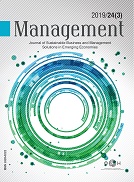Ranking Technology Forecasting Journals by Using Data Envelopment Analysis
DOI:
https://doi.org/10.7595/management.fon.2015.0018Keywords:
Technology forecasting, Data Envelopment Analysis, Ranking, JournalAbstract
The goal of this paper is to present the ranking of the journals in the field of technology forecasting (TF) through the application of the Data Envelopment Analysis - DEA. Over the past four decades, we have witnessed a rapid development in the field of technology forecasting. This development, both in theory and in practice, has been fuelled by the increase in complexity, even greater competition, and rapid changes in the business environment. Back in the past, little attention was paid to the importance and conceptual development in the field of TF, which caused numerous overlaps of the forms of TF development and its influence. The changes that have resulted in the emergence of information technology and modern manufacturing technology have actually increased the need for application of technology forecasting, as well as for explosive growth in scientific and engineering literature worldwide. The paper shows the ranking of 39 journals in the field of TF over the period from 1999 to 2011 through the application of the Data Envelopment Analysis, as well as through analyzing trend changes in publishing professional publications in the field of technology forecasting. Also pointed out are the shortcomings ofprevious methods of ranking journals by using impact factors, as one of the most important indicators of the quality of journals, as well as the possibilities of applying indicators obtained by using other methodologies. The results of such method of ranking should point out to publishing trends to the researchers engaged in this field, and direct them to journals in which they could present the results of their research. The aim of this research is to show that more than one criterion must be taken in order to create the rank of a journal from a specific area. In this way we get a more realistic ranking of leading journals from the observed area, since other necessary elements that contribute to the importance of a journal for a relevant field are also taken into consideration.








